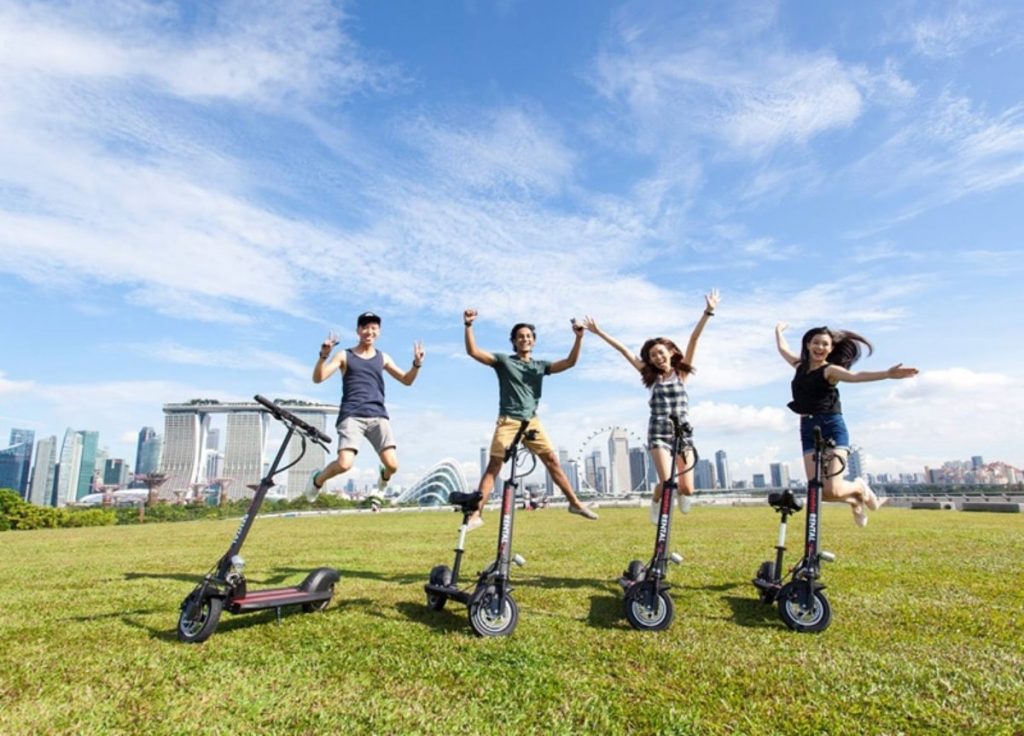How e-scooters will shape cities this 2022
Electric scooters have come a long way from being just a fun teenage pastime to a convenient and efficient means for adults to travel around the city. Today, e-scooters have become one of the fastest-growing micromobility options across the US, Europe, and Asia. Since its boom in 2018, electric scooters have spread in 626 cities in 53 countries, according to the NUMO mobility alliance. Despite this feat, the e-scooter market is still expected to grow.
With more people opting for e-scooters, how will e-scooters impact cities this 2022?
English
” />
Micromobility will change the way people choose to travel
Due to the pandemic, more people chose to ride e-scooters and other micromobile options to avoid the risks of infection from riding public transportation. Even when the world eases restrictions, e-scooters will remain a relevant mode of transport for people.
Recent data found that commuters value convenience, price, time to destination, privacy, and avoiding traffic. Post-pandemic, e-scooters will continue to tick off all of these commuter needs and offer local commuters, tourists, and casual travellers a fast, efficient, and low-cost alternative to cars and public transportation.
English
” />
Encouraging the use of more e-scooters will challenge city infrastructure
As electric scooter usage increases, cities will have to adopt roads, paths, and public spaces to accommodate them and other micromobile options. After all, no matter how innovative and affordable e-scooters become, they will always be limited without proper infrastructure.
These infrastructures include a separate lane or path for electric scooters and micromobile transportations. These lanes will keep riders safe from traffic and other vehicles on the road and encourage commuters and locals to take these safe routes. Besides this, proper parking spaces and charging stations for e-scooters will prevent commuters from littering the units in public and will provide enough power for riders.
These infrastructure needs become a challenge as cities will need to redesign some public areas to make them passable for e-scooters and incorporate micromobile transports when planning urban areas moving forward. Furthermore, e-scooter companies and cities must collaborate to establish safe e-scooter routes, parking spaces, and charging stations and create spaces that are conducive for micromobile transport.
Riders and lawmakers will push for e-scooters legalisation
Unfortunately, only a handful of countries, like Germany, France, and Denmark, have legalised electric scooters. As demand for and usage of e-scooters and other electric personal mobility devices (PMD) increase, updating policies regarding PMDs should be a priority for the safety of riders.
Across the globe, riders, manufacturers, and lawmakers are starting to campaign for the legalisation of e-scooters and other micromobile transportation.
Legalising privately-owned e-scooters and e-scooter ride-sharing platforms will offer locals and tourists an affordable, efficient, and sustainable option to travel within cities.
Electric scooters will support increased economic activity
Encouraging locals and tourists to travel around the city using an efficient and affordable way will allow them to explore the city and contribute to its economic activity. In a 2019 survey of Washington, DC e-scooter riders, 72% said that they were able to explore more local businesses and local attractions thanks to e-scooter sharing schemes. Meanwhile, 44% of riders in the same survey said that shared e-scooters allowed them to access job opportunities and reach their current job easier.
Moreover, several studies have shown that bike lane infrastructure in cities helped local businesses increase revenue in some cases. “I think that it is very significant that we found that positive business outcomes to the food service and retail service and retail industries on these corridors are persistent, even when we looked at different data metrics on employment or sales or when differetn analytical methods are utilized,” said Jenny Liu, associate professor in the Toulan School of Urban Studies & Planning.
Lastly, e-scooters save commuters from congestion and wasted time on the road which adds up to wasted productivity. In fact, in the US alone, traffic cost $87 billion in lost productivity in 2018. Given the economic blow that most countries face due to the pandemic, supporting and encouraging e-scooters can give cities the needed economic boost to recover.
Are electric scooters temporary or are they here to stay?
Due to the current demand for electric scooters, the e-scooter market value is expected to hit $42 billion by 2030. Experts have also predicted how mobility will change cities during the pandemic’s second year. Seeing its demand and current impact on cities and people, electric scooters are definitely here to stay. As long as manufacturers, riders, and lawmakers can work together to legalise e-scooters, cities can create safe routes and spaces for both riders and pedestrians.
That’s why at Mearth Technology, we saw the e-scooter’s potential to become the #FutureOfTransportation and have been encouraging Australians to switch to a more convenient and sustainable mode of personal transportation.
In fact, the Mearth electric scooter brand has joined Electric Riders Australia to petition the legalisation of PMDs across Australia.





